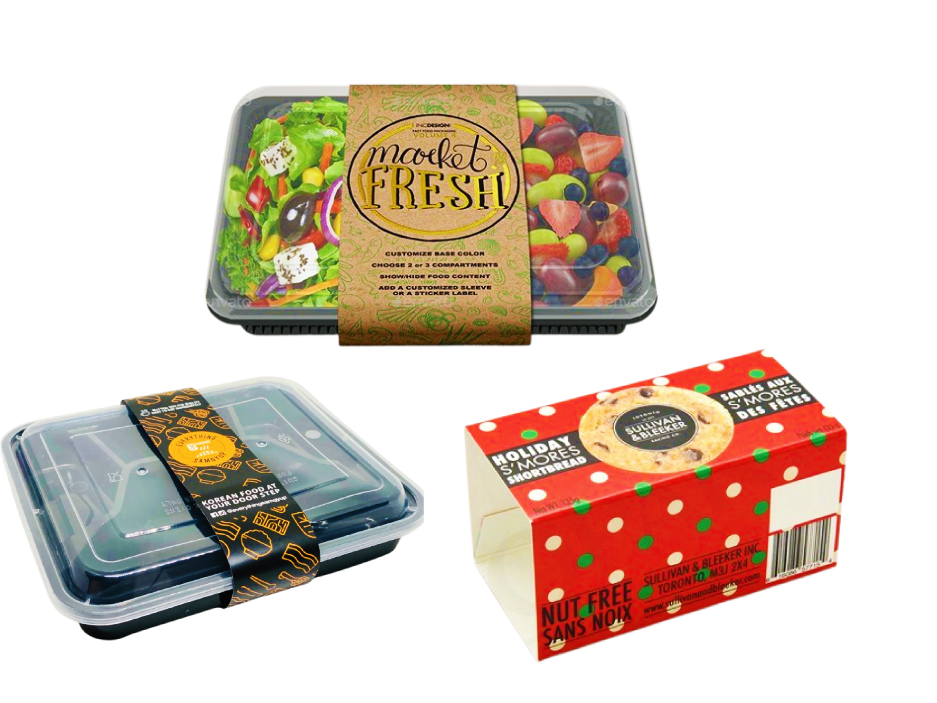In today’s competitive food industry, packaging plays a crucial role in attracting customers, ensuring product freshness, and maintaining brand integrity. Hence, food sleeve packaging has become a popular choice among manufacturers and retailers, thanks to its versatility, cost-effectiveness, and visual appeal. This article explores the ins and outs of food sleeve packaging, focusing on Food Sleeve Packaging Wholesale options, benefits, types, design considerations, and market trends.
What is Food Sleeve Packaging?
Food sleeve packaging is a flexible, enveloping packaging solution designed to encase food products. These sleeves can be made from various materials such as plastic, paper, or biodegradable substances, allowing for customization in design, size, and functionality. However, food sleeves can cover a wide range of products, from sandwiches and salads to snacks and baked goods.
Key Features
- Customizable Design: Food sleeves can be customised with logo, nutritional information, and vibrant graphics to enhance brand visibility.
- Material Variety: Options range from high-barrier plastics to eco-friendly materials, catering to diverse product needs and sustainability goals.
- User-Friendly: They are easy to apply and suitable for both manual and automated packaging processes, making them ideal for various production environments.
Benefits of Food Sleeve Packaging
Preservation of Freshness
Food sleeves often incorporate barrier properties that protect against moisture, oxygen, and light, which are essential for extending the shelf life of perishable items. This feature is particularly beneficial for fresh produce, baked goods, and ready-to-eat meals.
Cost-Effective Solutions
Purchasing food sleeve packaging in bulk can significantly reduce costs. Food Sleeve Packaging Wholesale options lower the price per unit, allowing businesses to maintain their profit margins while providing high-quality packaging.
Enhanced Branding Opportunities
Customizable food sleeves serve as effective marketing tools. Eye-catching designs attract consumers’ attention on crowded shelves, helping products stand out and fostering brand loyalty.
Eco-Friendly Options
As consumers become more environmentally conscious, many suppliers now offer biodegradable or recyclable food sleeve packaging. This not only appeals to eco-minded consumers but also helps brands comply with increasing regulatory requirements for sustainable practices.
Convenience
Food sleeves are lightweight and space-efficient, making them easier to store and transport. However, their flexibility allows them to fit various product shapes and sizes, providing a practical solution for diverse food items.
Types of Food Sleeve Packaging
1. Plastic Sleeves
These are the most common type of food sleeve packaging, known for their excellent barrier properties. Hence, they can be transparent or opaque, depending on branding needs, and are widely used for snacks, sandwiches, and deli items.
2. Paper Sleeves
Ideal for baked goods, paper sleeves are biodegradable and offer a more rustic aesthetic. However, they can be printed with branding and are often used for items like pastries and cookies.
3. Compostable Sleeves
Made from renewable resources, compostable sleeves are increasingly popular among brands committed to sustainability. However, they break down naturally, leaving no harmful residues.
4. Insulated Sleeves
Designed to maintain temperature, insulated sleeves are perfect for hot or cold food items. These sleeves are often utilized for takeout meals and delivery services, ensuring that food remains at the desired temperature during transport.
Choosing a Food Sleeve Packaging Wholesale Supplier
Quality Assurance
It’s essential to select a supplier that adheres to food safety standards and provides high-quality materials. Look for certifications such as FDA compliance to ensure the packaging meets safety regulations.
Customization Options
The right supplier should offer extensive customization, including size, material, and design. Hence, this flexibility allows businesses to tailor their packaging to their specific needs.
Minimum Order Quantities
Different suppliers have varying minimum order quantities. However, your business requirements to find a supplier that aligns with your order volume.
Lead Times
Hence, understanding production and delivery lead times is crucial for managing inventory and ensuring timely availability of packaging materials.
Pricing Structures
Compare prices among suppliers, considering both quality and features of the packaging. While lower costs are appealing, it’s important to ensure that quality is not compromised.
Designing Your Food Sleeve Packaging
1. Branding Elements
Incorporate brand colors, logos, and imagery into the packaging design to create a cohesive look that resonates with your target audience. However, consistent branding fosters customer loyalty and enhances recognition.
2. Clear Information Display
Ensure that essential information, such as ingredients, nutritional facts, and expiration dates, is easily visible. Transparency builds trust with consumers and encourages informed purchasing decisions.
3. Engaging Artwork and Graphics
Invest in high-quality artwork and graphics that capture consumer attention. Hence, engaging designs can differentiate your products and reinforce your brand identity.
4. Compliance with Regulations
Make sure your packaging complies with local regulations regarding food labeling and safety. However, this includes providing accurate ingredient listings and allergy information.
Market Trends Impacting Food Sleeve Packaging
Rising Demand for Convenience
As lifestyles become busier, consumers increasingly seek convenient food options. Hence, food sleeve packaging facilitates easy grab-and-go consumption, catering to this growing trend.
Focus on Health and Wellness
With a rising emphasis on health-conscious eating, brands are using packaging to highlight nutritional benefits. Food sleeves can incorporate clear labeling and health claims that resonate with consumers.
E-commerce Expansion
The growth of online grocery shopping necessitates packaging that protects food during transport while also appealing visually upon delivery. Sleek, attractive food sleeves enhance the unboxing experience.
Technological Advancements
Innovations in printing and materials science have led to improved food sleeve options. Digital printing allows for smaller batch runs and greater customization without significantly increasing costs.
Conclusion
Food sleeve packaging is a versatile and effective solution for food manufacturers and retailers looking to enhance product presentation and maintain freshness. However, with a range of materials and customization options available through Food Sleeve Packaging Wholesale suppliers, businesses can effectively leverage this packaging solution to drive sales and customer satisfaction. Custom Brand Packaging is designed to reflect your unique identity and values, enhancing product appeal while providing essential protection and information.


